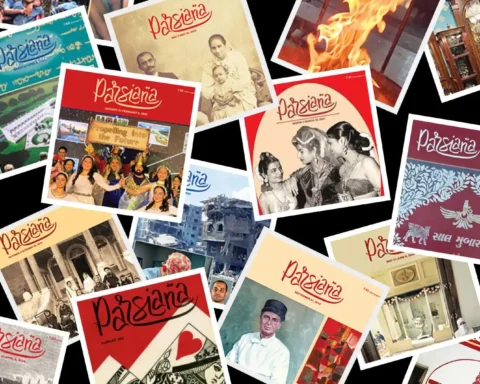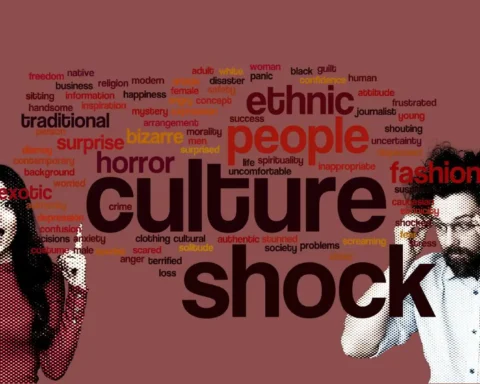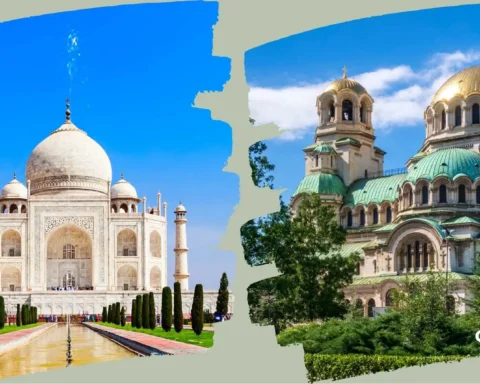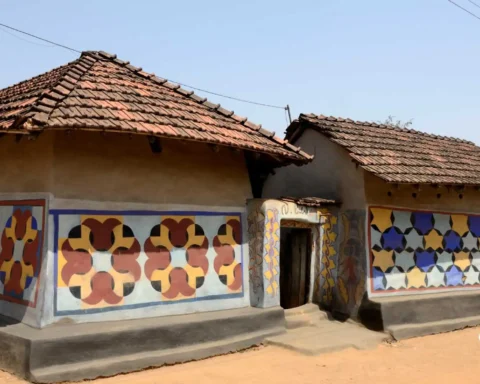London, the bustling metropolis that seamlessly blends history and modernity, is a melting pot of cultures worldwide. One of the most vibrant and influential communities in this cosmopolitan city is the Indian community of London. With its rich heritage, diverse traditions, and flavorful cuisine, the Indian community in London offers an adventure like no other.
In this blog, let us unveil the captivating saga of London’s Indian community, traversing from its historical origins to cultural vitality and prosperous enterprises. Join us in immersing ourselves in the colours, flavours, and togetherness that define this unique cultural adventure of the city.
Table of Contents
History and Heritage of the Indian Community of London
The history and heritage of the Indian community of London, United Kingdom, can be traced back to the East India Company and the colonial era. The first interactions between Indians and the British, later called “British Indians” (citizens of the United Kingdom whose roots are in India), began to shape the city’s multicultural landscape. Indians arrived in London as traders, scholars, and diplomats, marking the beginnings of a cultural exchange that would leave a lasting impact.
Over the years, the Indian community’s presence in London grew significantly. What started as a small group of individuals expanded into a vibrant and influential community that has become an integral part of the city’s fabric. This community has made notable contributions in various fields, including politics, arts, business, and academia, showcasing their diversity of talents and skills.
The heritage of the Indian community is deeply interwoven with London’s history. The traditions, languages, and customs of early Indian settlers have been passed down through generations. This has created a distinct and integrated cultural identity within the larger London society. This heritage bridges the past and the present, reminding us of the community’s enduring connection to the city and its role in shaping its development.
As the United Kingdom continues to evolve as a global metropolis, British Indians’ history and heritage remain a vital part of its identity. The stories of struggles, achievements, and contributions of the Indian community serve as a testament to the power of cultural exchange and integration in a diverse and cosmopolitan city like London.
YOU MIGHT BE INTERESTED IN: Navigating Cultural Identity and Indian Cuisine with Aparna Soni
British Indians
These are individuals from the UK whose roots trace back to India. This inclusive term covers those born to Indian parents within the country and those who made the journey from India itself. The United Kingdom boasts a vibrant community of British Indians, totalling around 1.4 million people.
The profound historical connections between India and Britain play a pivotal role in explaining why Indians form the most substantial ethnic group within the UK. Notably, India maintains its membership in the Commonwealth of Nations. As a result, this camaraderie has given rise to inviting communities for Indians across the UK, extending their embrace to nearly everyone.
Among British Indians, prominent ethnic groups include Punjabis, Gujaratis, and Bengalis, while smaller yet vibrant communities like the Tamilian, Malayali, Marathi, Telugu, and Konkani also thrive.
Cultural Diversity in London
Influence from Indians has left an indelible mark on the cultural fabric of the British capital, with London serving as the epicentre of this cross-cultural interplay. Areas such as Southall, Hounslow, Brent, Croydon, Redbridge, Ealing, Barnet, Tooting, Harrow, and Wembley all contribute to this vibrant tapestry. This dynamic cultural fusion is a testament to the global reach of Indian influence and its harmonious coexistence with the British milieu.
London is renowned for its incredible cultural diversity, stemming from centuries of immigration, trade, and historical interactions with various parts of the world. This city has transformed into a vibrant tapestry of cultures, languages, and traditions, making it one of the most multicultural places on the planet.
The cultural diversity in London is visible in its neighbourhoods, each with a unique character shaped by the communities that reside there. From Chinatown to Little India, from the Afro-Caribbean influences of Brixton to Hackney’s Turkish and Kurdish communities, one can find a rich array of cultural enclaves contributing to the city’s eclectic atmosphere.
Cultural diversity is not only present in the neighbourhoods but also in the city’s culinary scene. London boasts an extensive range of restaurants, cafes, and food markets that offer flavours from around the globe. Whether craving Ethiopian injera, Japanese sushi, Turkish kebabs, or Caribbean jerk chicken, one can likely find it here.
London’s cultural diversity has also influenced its language landscape. More than 300 languages are spoken in the city, reflecting its global population. English is the most widely spoken language, but one will also encounter languages like Bengali, Urdu, Polish, Arabic, and Mandarin, among others.
Population
With a population exceeding half a million, the Indian population forms a prominent presence within the bustling city of London. They constitute the city’s most substantial non-white ethnic group, contributing to its diverse tapestry.
London houses a thriving Indian-origin community comprising 436,993 individuals. This group outnumbers the Pakistani and Bangladeshi populations by a substantial ratio of 3 to 1. The influence of this community reaches far and wide, extending to the Outer London suburbs where Indians have made their homes a testament to their presence.
Names like Wembley and Southall resonate as vibrant hubs, boasting substantial Gujarati and Sikh communities. Significantly, these Indian communities have established vibrant enclaves across ten distinct London boroughs: Barnet, Brent, Croydon, Ealing, Enfield, Harrow, Hillingdon, Newham, and Redbridge. With populations surpassing the 10,000 mark, these boroughs thrive as centres of Indian culture and heritage.
Remarkably, the boroughs of Ealing, Brent, and Harrow emerge as pivotal players, constituting 40% of all Indians residing in Outer London and 33% of the entire Indian population in London.
Religion
The religious landscape of the Indian community in London is a rich tapestry, reflecting the diverse cultural and spiritual traditions they bring with them. From bustling Diwali celebrations to serene Gurdwaras, the city echoes with a harmonious blend of Hindu, Sikh, Muslim, Christian, and other faiths, creating a vibrant mosaic of belief systems.
Hinduism
In the heart of North West London, the grandeur of the Shree Swaminarayan Mandir shines. Its presence is a testament to the temple’s significant magnificence within the continent. It is a testament to the profound influence of Hinduism on the city. Approximately 350,000 Hindus call London their home, with a majority tracing their ancestry to India. Among the Indian community, Hindus form a significant presence, accounting for nearly 64% of the population in Greater London.
Sikhism
In the dynamic mosaic of Greater London, West London emerges as a hub for Sikhs, with Southall serving as the heart of this vibrant community. Other areas like Bexleyheath, Erith, Hayes, Ruislip, Hounslow, Ilford, Belvedere, Osterley, and Ealing also host Sikh populations. A prominent Sikh organization, City Sikhs, finds its headquarters in London. The Sikh population in London totals around 150,000, most of whom hail from Indian origins. This community forms over 27% of the Indian population within Greater London, underscoring their meaningful presence and contributions.
Islam
Within London’s diverse fabric, approximately 20% of Indians identify as Muslims, forming an integral part of the city’s cultural mosaic. Predominantly located in the East London borough of Newham, Indian Muslims have cultivated strong bonds with the city’s broader Pakistani and Bangladeshi Muslim communities. The origins of many Indian Muslims trace back to East Africa, Jamaica, Gujarat, and Mumbai, weaving a rich tapestry of heritage and diversity.
Christianity
Christianity finds a significant resonance among London’s Indian population, notably stemming from the states of Kerala and Goa. This community encompasses diverse denominations, including Indian Orthodox, Catholic, and Protestant branches. A distinctive landmark is the church in Wembley, where church services are offered in the Konkani language. The presence of these Christian Indians enriches the spiritual landscape within London, each contributing their unique heritage and devotion to the city’s vibrant religious tapestry.
Social Issues
The Indian community in London, like any other cultural group, faces a range of social issues that can impact their well-being and integration into the broader society. Experiences vary widely based on socioeconomic status, generation, and personal circumstances.
Socio-Economic Status
British Indians boast some of the lowest poverty rates across various ethnic groups in the United Kingdom, trailing closely behind only their white British counterparts.
This community demonstrated its resilience in the job market, with an unemployment rate of a mere 4% in 2018, securing the lowest position among all ethnic minority groups.
Moreover, a unique financial narrative unfolds within the British Indian community, with Hindus emerging as the second wealthiest religious group after Jewish individuals.
Research findings published by the Resolution Foundation in 2020 further amplify this story. They hold the apex position in terms of median total household net wealth among the primary British Indian ethnic cohorts, with an impressive figure of £347,400. This wealth signifies not just financial prosperity but also mirrors the diligence and contributions of the Indian Community to the socio-economic landscape.
Academic Performance
Drawing insights from the Department for Education’s comprehensive dataset for the academic year 2020-21, Indian people have achieved a remarkable position in academic accomplishments, securing the second-highest rank in both A-Level and GCSE evaluations. Their achievements stand just behind those of the British-Chinese ethnic group, showcasing the dedication and excellence that British Indians consistently bring to their educational pursuits.
An impressive 33.2% of British Indian students achieved the remarkable feat of securing at least 3 A grades at A-Level. At the same time, the realm of GCSE attainment showcased an average score of 62.0 on the Attainment 8 scale.
This phenomenon not only highlights the dedication and potential of these students but also emphasizes the undeniable impact of cultural emphasis on education within the British Indian community.
Vibrant Southall
Nestled in the heart of West London, Southall stands as a vibrant testament to its Indian heritage, seamlessly intertwined with a rich tapestry of global communities. This melting pot comes alive with myriad cultural expressions: the vibrant hues of women adorned in colourful saris, the aroma of samosas and Indian sweets wafting from street food stalls, and the vivid fabrics decorating shop fronts.
Immersed in this lively ambience, Bhangra music permeates the air, infusing energy into every corner. The streets hum with the spirited pulse of the local economy, offering a glimpse into a thriving community. A visit to Southall promises an unforgettable experience, where cultural diversity converges in a harmonious celebration of life and traditions.
YOU MIGHT BE INTERESTED IN: Redefining Politics in the London Assembly Elections with Farah London
Conclusion
In conclusion, the history and heritage of the Indian community of London form an essential chapter in the city’s multicultural narrative. The rich tapestry of Indian traditions, languages, and customs has seamlessly woven itself into London’s cultural fabric.
As London continues to embrace its global status, the Indian community stands as a shining example of the power of cultural exchange and integration. Their history and heritage remind us of the enduring connections that span continents and generations. In the grand tapestry of London’s multicultural landscape, the story of the Indian community is a vibrant thread that binds the past, present, and future of this great city.
FAQs
Where are Indian Communities in London?
Hounslow, Harrow, Hillingdon, Newham, Brent, Redbridge, and Ealing.
Which Indian community is the largest in the United Kingdom?
Gujaratis account for 45 per cent of Indians living in the UK, while the Indian Punjabis account for about 40 per cent of Indians living in the UK.
What is the Hindu population of London?
According to the 2021 Census, Hindus are 5.15%.
How many Sikhs live in London?
As of the 2021 census, London accommodates a significant Sikh population of 144,543 individuals, comprising 1.6% of the city’s residents. This demographic positioning establishes the region as host to the United Kingdom’s second-largest Sikh community.










[…] Indian community has brought diverse religious practices to South Africa, with Hinduism, Islam, Christianity, and […]
[…] Prasad, at 29, earned a Michelin star while serving as sous chef at Tamarind in Mayfair, London, becoming the youngest Indian chef to achieve this honour. Hailing from a lineage of hybrid […]
[…] Kumar Sethia, born in Kolkata in 1941, has lived in London for over 50 years. He showed an interest in various types of tea at a young age and, at 16 years […]
[…] of the "white" government – better known as "Apartheid" – ensured the second-class status of the Indian community, together with the majority of the South Africans of colour, who were denied their freedoms in many […]
[…] overlooked, ignored, discriminated against, and mistreated, and emphasized the diverse role of the Indian community in the nation's […]